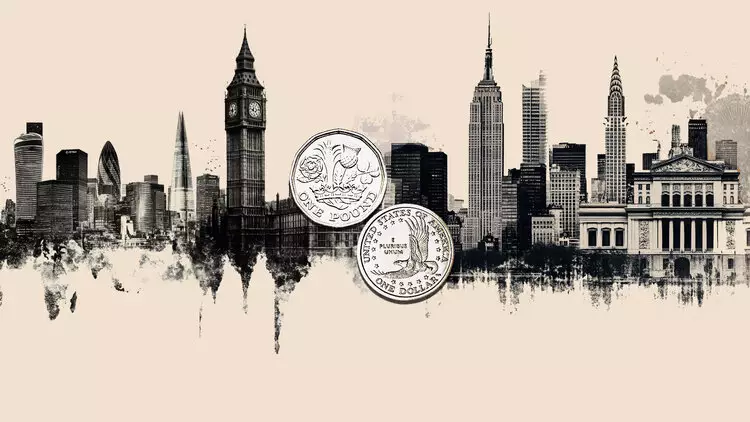In the volatile world of currency exchange, the British Pound (GBP) has proved to be surprisingly resilient amidst the storm of geopolitical tension and mixed economic indicators. Recently, GBP/USD experienced a notable ascent from a low of 1.3369 to around 1.3500, marking a 0.37% increase against the US Dollar. This shift is particularly striking given the tumultuous backdrop characterized by military action in the Middle East and varying economic performance metrics in both the UK and the US. It seems that while the global narrative may be dominated by conflict, investors are finding pockets of optimism that propel the GBP forward.
The Geopolitical Tug-of-War
The spark that ignited the market volatility can be traced back to the United States’ military strikes on Iranian nuclear sites. The immediate aftermath saw the US Dollar gain traction as global tensions flared. The specter of war often sends investors scurrying towards safe-haven assets like the Greenback, but in this instance, the volatility has unlocked opportunities for strategic trading. Coupled with Iran’s decision to close the Strait of Hormuz and its aggressive missile strikes against Israel, the geopolitical landscape is fraught with unpredictability. Such moves often serve as a catalyst that shakes the very foundations of the currency market, prompting buyers and sellers alike to reassess their positions.
However, the market’s knee-jerk reactions are often misguided. While fear and uncertainty can drive immediate value in the Dollar, a more nuanced view reveals potential for GBP strength as evidenced by the positive shift in market sentiment later in the trading session. The White House’s reported interests in pursuing diplomatic channels may further mitigate fears, allowing the Pound to recover from its lows.
Economic Indicators and Their Impact
The economic indicators emerging from both the US and UK further complicate the narrative. In the US, the S&P Global Manufacturing PMI showed a promising figure of 52, indicating that manufacturing is humming along above expectation despite a slight dip in the Services sector. Meanwhile, UK data demonstrated a positive trend with the Services PMI bouncing up to 51.3, signaling a recovery phase. Such indicators generally elicit mixed reactions; while improving figures can empower a currency, they can also foreshadow potential downturns due to tightening monetary policy.
Dovish sentiments are resurfacing from the Federal Reserve, particularly comments by Governor Michelle Bowman hinting that a rate cut in July might be appropriate. This type of rhetoric tends to weigh down the Dollar, providing a backdrop that enhances the appeal of the GBP for traders looking to capitalize on cyclical adjustments in policy interest rates.
The Technical Landscape for GBP/USD
From a technical analysis perspective, the GBP/USD pair is at a pivotal junction. With the current level trading close to key moving averages, the behavior of the currency pair in the ensuing sessions will be particularly telling. Traders are now watching the 20-day Simple Moving Average (SMA) around the 1.3508 mark. A decisive breakout above this threshold could facilitate an upward trajectory toward subsequent resistance levels at 1.3550 and beyond. However, concurrent risks loom. A dip below 1.3500 could trigger sell-offs, leading the pair towards lower supports, specifically the 50-day SMA at 1.3399, which underscores the necessity for robust positioning by buyers.
Currency Heatmaps and Market Dynamics
Moreover, a closer look at the currency heat map reveals intriguing dynamics at play among major currencies. The British Pound has emerged as the strongest contender against the New Zealand Dollar this week, showcasing its comparative strength. Such data serves as a critical tool for traders looking to dissect currency relationships in a rapidly evolving market. The heat map underscores how reactive market participants are to developments beyond immediate borders; in a globally interconnected economy, the actions of one nation can sway market sentiment across the globe, offering both challenges and opportunities.
The GBP has displayed an impressive counterweight to Dollar dominance amid a backdrop of geopolitical strife and economic uncertainty. For investors, understanding this delicate interplay between economies and the forces of conflict could unlock opportunities for strategic trades, shedding light on a path forward amidst chaos. The question remains: will the underlying strength of the pound endure as crises unfold, or will external pressures prevail? The stage is set, and the currency markets await the unfolding drama.

